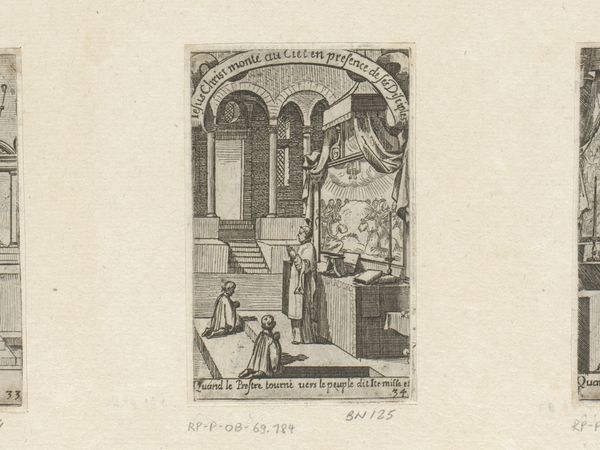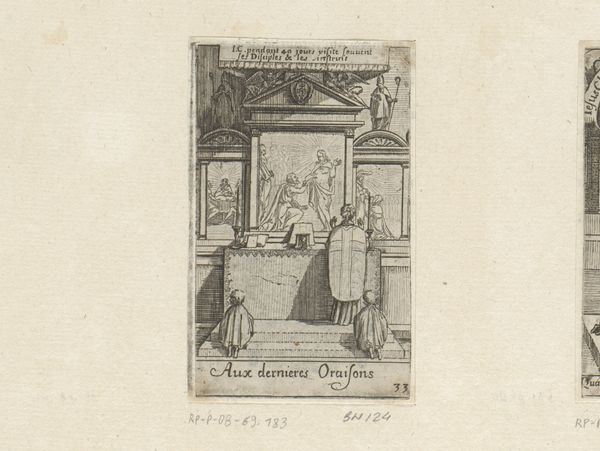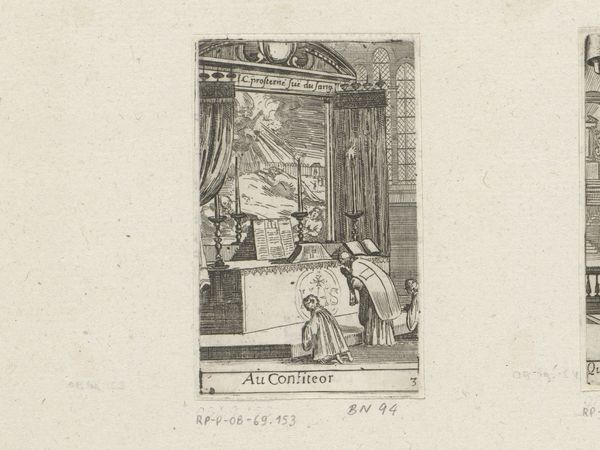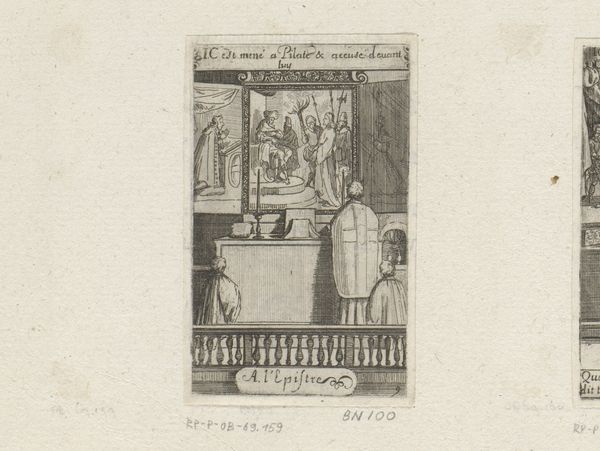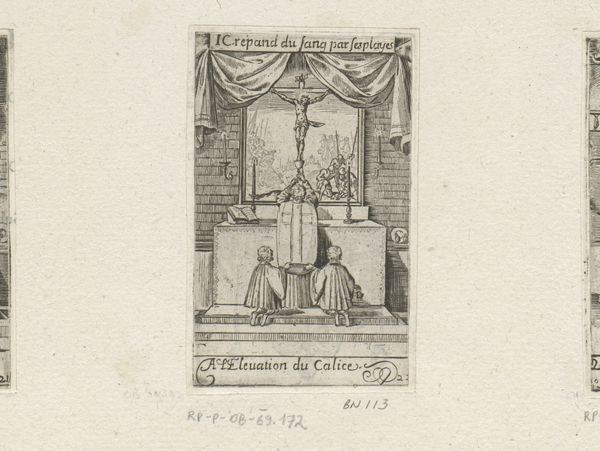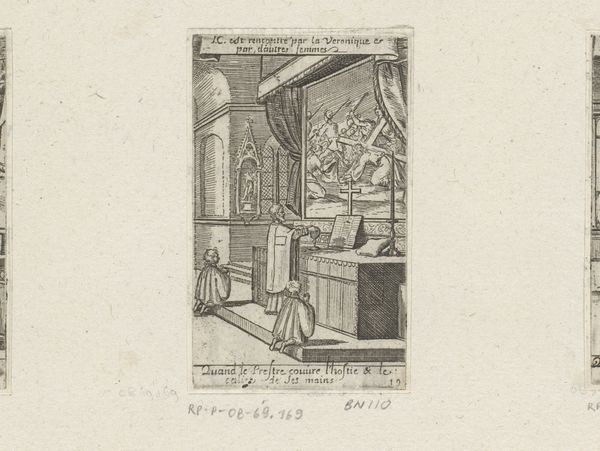
Priester met twee jongens biddend aan een altaar aan het begin van de mis 1661
0:00
0:00
sebastienleclerci
Rijksmuseum
engraving
#
baroque
#
figuration
#
line
#
history-painting
#
engraving
Dimensions: height 84 mm, width 53 mm
Copyright: Rijks Museum: Open Domain
Editor: We are looking at “Priest with Two Boys Praying at an Altar at the Beginning of Mass,” an engraving made in 1661 by Sébastien Leclerc I. The scene has a stillness, even solemnity, despite its small scale. How should we interpret this moment in history? Curator: This work reflects the broader religious and social landscape of 17th-century France. Leclerc was working during a time of significant religious reform and Counter-Reformation efforts. This engraving served as a form of religious instruction and reinforcement of Catholic practices, primarily circulated to a literate, elite audience, influencing social behavior through controlled, often propagandistic imagery. Notice how the setting emphasizes the sacred space through architectural detail, while the figures, especially the boys, kneel in subservience, underscoring hierarchies within the church and society. Editor: So, the power dynamics of the Church are really on display here? Curator: Exactly. Furthermore, consider how the image functions as a representation of proper religious conduct. By portraying this scene, Leclerc subtly encouraged conformity and reinforced established social norms. Do you notice the contrast in textures achieved solely through line work in the print? The billowing drapes contrasted with the crisp altar cloth? It draws the eye upward. Editor: I see that now, the lines are all very intentional. Is there any significance to this particular moment—the start of mass? Curator: The beginning of the mass holds symbolic importance, representing purification and preparation. By choosing to depict this specific moment, Leclerc emphasized the ritualistic aspect of Catholicism, thereby subtly countering Protestant critiques of Catholic ceremony. Editor: It's fascinating to consider this artwork as more than just a religious scene, but as a tool for shaping social behaviors and upholding the power of the church. Thank you for sharing your expertise! Curator: Indeed, viewing art through the lens of social and religious influence provides us with a much richer understanding of the piece, allowing it to act as a record for an era.
Comments
No comments
Be the first to comment and join the conversation on the ultimate creative platform.





